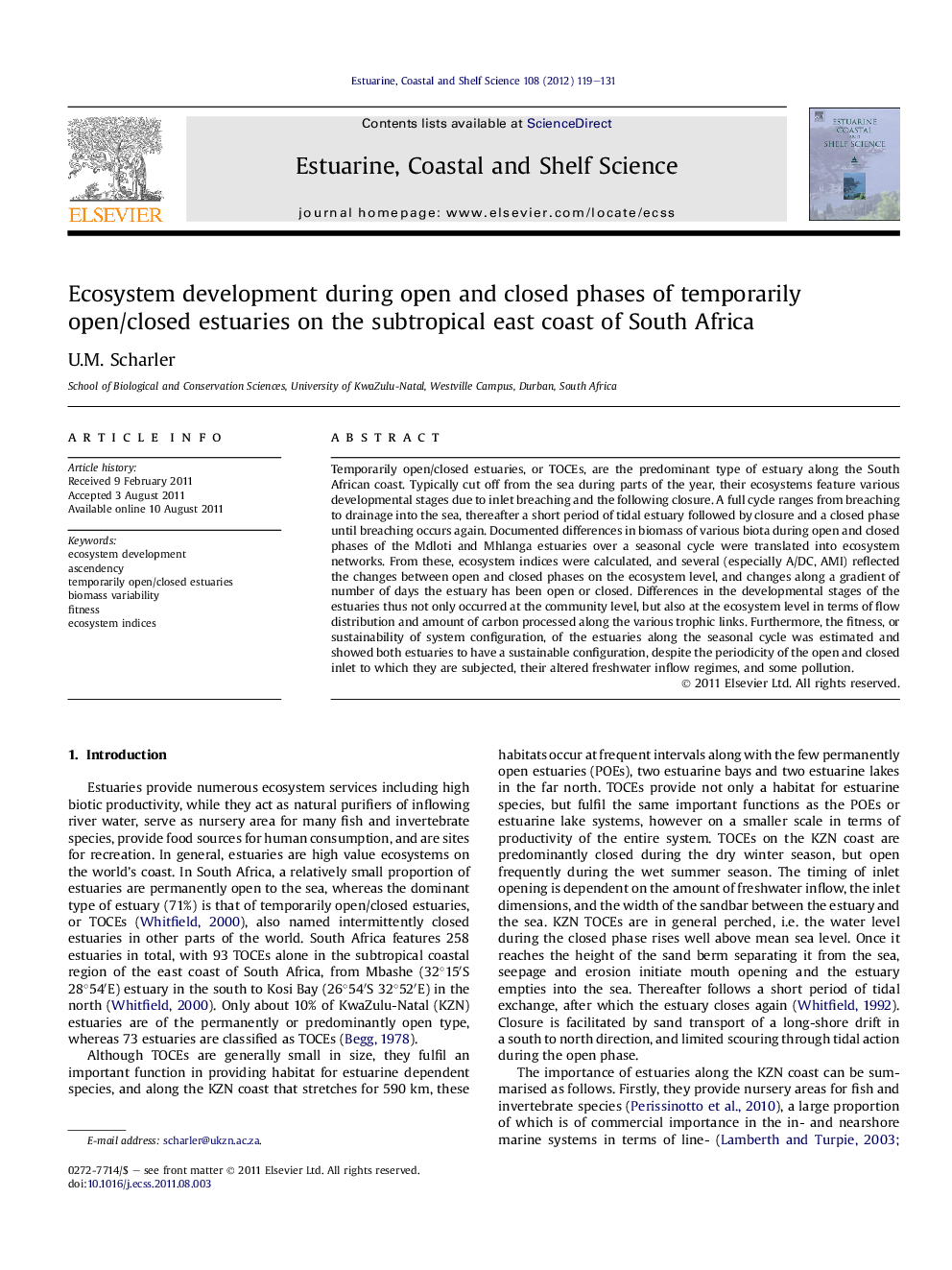| Article ID | Journal | Published Year | Pages | File Type |
|---|---|---|---|---|
| 4540211 | Estuarine, Coastal and Shelf Science | 2012 | 13 Pages |
Temporarily open/closed estuaries, or TOCEs, are the predominant type of estuary along the South African coast. Typically cut off from the sea during parts of the year, their ecosystems feature various developmental stages due to inlet breaching and the following closure. A full cycle ranges from breaching to drainage into the sea, thereafter a short period of tidal estuary followed by closure and a closed phase until breaching occurs again. Documented differences in biomass of various biota during open and closed phases of the Mdloti and Mhlanga estuaries over a seasonal cycle were translated into ecosystem networks. From these, ecosystem indices were calculated, and several (especially A/DC, AMI) reflected the changes between open and closed phases on the ecosystem level, and changes along a gradient of number of days the estuary has been open or closed. Differences in the developmental stages of the estuaries thus not only occurred at the community level, but also at the ecosystem level in terms of flow distribution and amount of carbon processed along the various trophic links. Furthermore, the fitness, or sustainability of system configuration, of the estuaries along the seasonal cycle was estimated and showed both estuaries to have a sustainable configuration, despite the periodicity of the open and closed inlet to which they are subjected, their altered freshwater inflow regimes, and some pollution.
